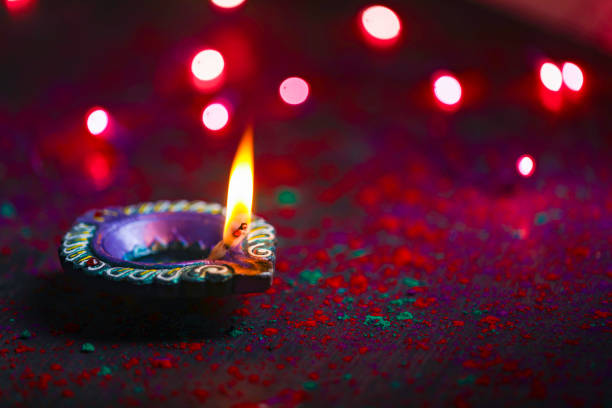Diwali, or the Festival of Lights is arguably the biggest and brightest of festivals celebrated in the Indian subcontinent and among the Indian diaspora spread across the four corners of the world.
Diwali, or Deepavali as it is known in some Indian states, is celebrated over five days during the Hindu lunisolar month of Kartika that corresponds to mid-October and mid-November each year. Diwali is concurrent with and analogous to various other religious, spiritual and historical celebrations marked by other communities, cultures and religions in the region, including among Hindus, Jains and Sikhs, and among Newar Buddhists in Nepal, as well as by many tribal cultures in north-easterly states of India.
While the religious aspect of Diwali is the highlight of the festival for the Hindus, to the Sikhs and Jains it is the historical and sacred as well as spiritual implications of the festival that take center-stage. To the Hindus in India, and around the world, the celebration of Diwali has religious associations that vary based on regional and local interpretations of myths and legends from the Indian epics of Ramayana and Mahabharata. In Nepal it is celebrated as Tihar or as Swanti by Buddists, especially Newar Buddhists in the Kathmandu Valley of Nepal.
For adherents of the Jain faith, Diwali venerates the attainment in the 6th century of ‘Moksha’ — the highest and noblest objective of the soul — by Lord Mahavira, the 24th and last ‘Tirthankar’ or spiritual leader of Jains. Meanwhile, the Sikh community around the world celebrate Diwali as ‘Bandi Shor Divas’, or Day of Liberation, in commemoration of the release from imprisonment of their sixth Guru and leader, Guru Hargobind ji, by Mughal invaders in the 17th century.

Besides its religious, cultural or historical importance to people across the vast sub-continent, and the contextual differences of the celebration, Diwali remains symbolic of the inner light that guides us throughout our life. The festival resonates with the message of the ultimate victory of light over darkness, of hope over despair, of good over evil, of knowledge over ignorance.
The symbolism of light has been prevalent in cultures throughout the evolution of humanity. It is one of the oldest and among the most significant and enduring icons, with spiritual, mystical and metaphorical connotations to various cultures and religions around the world. Throughout the eons, among gnostics as well as those with agnostic leanings, light has been seen as a symbol of life and hope, of joy and happiness, of truth, wisdom, guidance, enlightenment, and as an embodiment of divinity. In many parts of the world, light is represented with candles, lamps, fires and fireworks that represent the victory of light in its perpetual opposition to darkness.
In India, the origin of Diwali can be traced back historically to the ancient period, when it was celebrated during the Hindu calendar month of Karthika as an important harvest festival. Over time, various legends and myths from the Hindu epics of Ramayana and Mahabharata were associated and celebrated along with the early agrarian festival. While some Hindus believe Diwali to be a celebration of the birth and also marriage of the Goddess Lakshmi with Lord Vishnu, in Bengal, the festival is dedicated to the worship of Mother Kali, the Goddess of strength. Lord Ganesha, the elephant-headed God, the symbol of auspiciousness and wisdom, is also worshiped in most Hindu homes on this day.
To many Hindus, Diwali also commemorates the return of Lord Rama as king of Ayodhya in Northern India, along with his wife Sita and brother Lakshman, after a 14-year-long exile and the vanquishing of demon-king Ravana. In joyous celebration of the return of their king, the people of Ayodhya, the capital of Lord Rama’s kingdom, illuminated the town with earthen diyas (oil lamps) and burst fire-crackers. Today, a symbolic reenactment ‘Ram Lila’, or the killing by Rama of Ravana and the freeing of Sita, takes up center-stage in the ancient town of Ayodhya and elsewhere, with effigies of the ten-headed Ravana being burned.
The word Diwali comes from a fusion of two Sanskrit words, Dipa or Deepa meaning light or lamp, and Awali meaning a row, series or line. In many parts of India, the festival is celebrated by lighting rows of small earthen- oil lamps called diyas that symbolize the driving away of darkness. In other parts of India, the Festival of Light marks the start of a new year in the Hindu calendar. In many areas, Diwali has taken on a more temporal note, with merchants, retailers and corporates using the festival to market and sell their products. Today, the five-day long Festival of Lights has become almost synonymous with shopping frenzy, of bargain offers and special discounts, as well as a time of socializing and entertaining among family and friends.
Like any major festival, preparations for Diwali begin days or weeks ahead, with the formal festival limited to five-days, beginning two days before the night of Diwali, and ending two days after. Each day of Diwali has its own tale, legend and myth to tell. Sweet treats are exchanged, houses are thoroughly cleaned, homes are lit with diyas and decorated with rangoli, the colorful designs and patterns created on the threshold to homes and on the floor during the festival using natural colors, dyes, flowers and other material. New clothes are worn and each day of the festival is marked by different traditional rituals.
Through all this celebration and festivities, what remains true and consistent throughout the five days of Diwali, is the celebration of life, its enjoyment and goodness. This year, even if you are away from the sights and sounds of Diwali as it is celebrated in the Indian subcontinent, take a moment to light a candle or a diya, sit quietly, close your eyes, breathe deeply and concentrate on that supreme light which illuminates your inner self and guides you along the path of life.

















